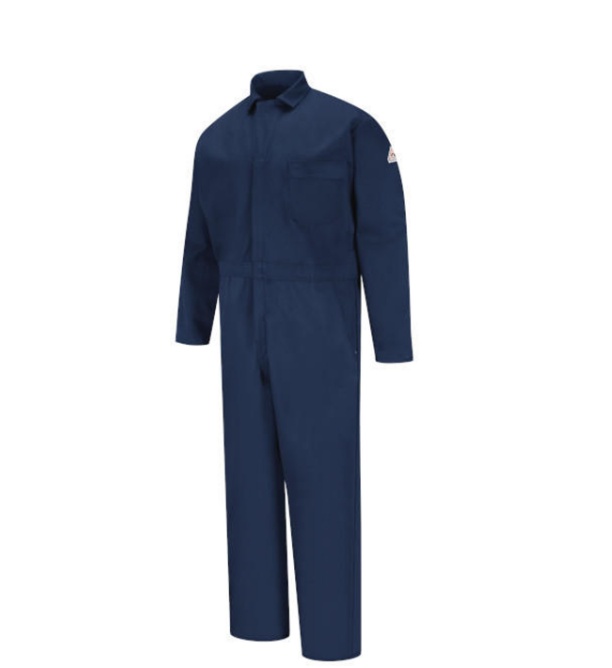Coveralls are versatile garments that have transcended their original purpose as workwear to become fashion statements, protective gear, and even symbols of cultural significance. While their primary function is to provide full-body protection, the history and evolution of coveralls reveal their surprising impact on various aspects of our lives. In this article, we will explore the world of coveralls, their origins, uses, and the diverse roles they play in today's society.
The Origins of Coveralls
The concept of coveralls can be traced back to the early 20th century when they were initially designed for practicality and functionality. Coveralls, also known as boiler suits or jumpsuits, were intended for workers in various industries, including aviation, automotive, and manufacturing. They provided a one-piece solution for protecting the wearer's clothing from dirt, oil, and other hazards.
Over time, these utilitarian garments evolved to include features like multiple pockets, adjustable cuffs, and reinforced knees to suit the specific needs of different industries. The material of coveralls also diversified, with options such as denim, cotton, and flame-resistant fabrics, each catering to different work environments.
Utilitarian Workwear
Coveralls have retained their status as practical workwear in many industries. They are still commonly used by mechanics, electricians, welders, and other professionals who require durable, protective clothing. Coveralls help shield workers from various workplace hazards, including grease, chemicals, and extreme temperatures.
For example, flame-resistant coveralls are essential in the oil and gas industry, where the risk of fire is high. These garments offer protection against flash fires and electric arc flashes, ensuring the safety of workers in these demanding environments.
Coveralls in the World of Fashion
Coveralls have made a remarkable transition from the shop floor to the runway. In recent years, they have become fashion staples, embraced by designers and fashion-forward individuals. The fashion industry has reimagined coveralls, adding style and flair to their functional roots.
Fashion coveralls are made from a variety of materials, including denim, corduroy, and luxurious fabrics, and they come in a wide range of colors and designs. They are often tailored to fit well and flatter the wearer's body, turning a utilitarian garment into a fashionable statement piece.
Coveralls in fashion have been endorsed by celebrities, making appearances on red carpets, music videos, and street style trends. Their versatility and adaptability have made them a favored choice for those who seek comfort and style in one garment.
Coveralls as Protective Gear
In addition to their presence in fashion, coveralls serve a critical role in personal protective equipment (PPE) for a wide array of applications. This includes cleanrooms, laboratories, healthcare settings, and even space exploration.
In cleanrooms, where maintaining a sterile environment is crucial, coveralls with specialized materials and designs are worn to prevent contamination. These coveralls are often made from non-shedding materials that minimize the release of particles, ensuring the purity of the environment.
In healthcare, coveralls are used to protect medical professionals from infectious diseases and biohazards. This form of PPE has been thrust into the spotlight during global health crises, emphasizing the importance of proper protective gear to safeguard those on the front lines.
Space agencies like NASA use specially designed coveralls, known as Extravehicular Mobility Units (EMU), for astronauts during spacewalks. These coveralls are equipped with life support systems, thermal insulation, and protection against micrometeoroids, making them an essential component of space exploration.
Cultural and Symbolic Significance
Coveralls have also found their place in cultural and symbolic contexts. In certain cultures and subcultures, they hold unique meanings and associations. For example:
Automotive Culture
In the world of motorsports and automotive enthusiasts, coveralls are often worn as a symbol of passion and dedication. They represent the unity of mechanics, drivers, and fans who share a deep love for all things automotive. Racing teams often have distinct coverall designs with logos and colors that signify their affiliation and spirit.
Military and Uniforms
Military personnel often wear coveralls, which are sometimes referred to as combat coveralls. These garments are designed for the rigors of military service, providing protection, camouflage, and functionality. Military coveralls can signify rank, unit, or specialization.
Gender Equality
Coveralls have become symbolic of gender equality and empowerment. Women wearing coveralls in traditionally male-dominated industries, such as construction and mechanics, challenge stereotypes and break down barriers. The "Rosie the Riveter" image from World War II, featuring a woman in a polka-dot bandana and coveralls, has become an iconic symbol of female strength and determination.
Conclusion
From their humble beginnings as practical workwear to their multifaceted roles in fashion, safety, and culture, coveralls have come a long way. These versatile garments have demonstrated their ability to adapt and evolve, reflecting the changing needs and aspirations of society.
Coveralls continue to play essential roles in many industries, ensuring the safety and well-being of workers. Simultaneously, they have expanded their horizons, making appearances in fashion, culture, and symbolism. Coveralls, in all their forms, remain a testament to the enduring legacy of garments that were initially created for a singular purpose but have, over time, become symbols of our ever-changing world.


No comments yet